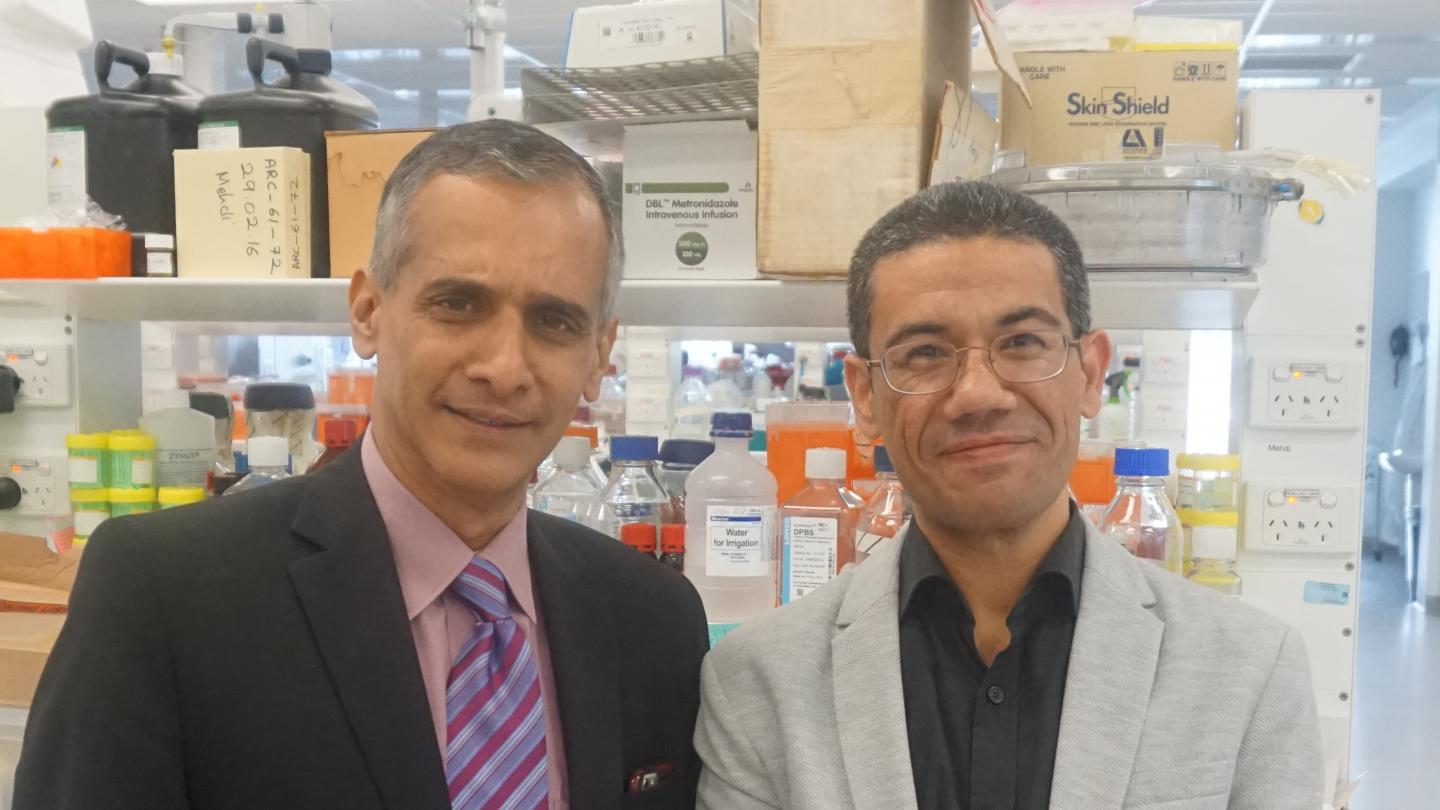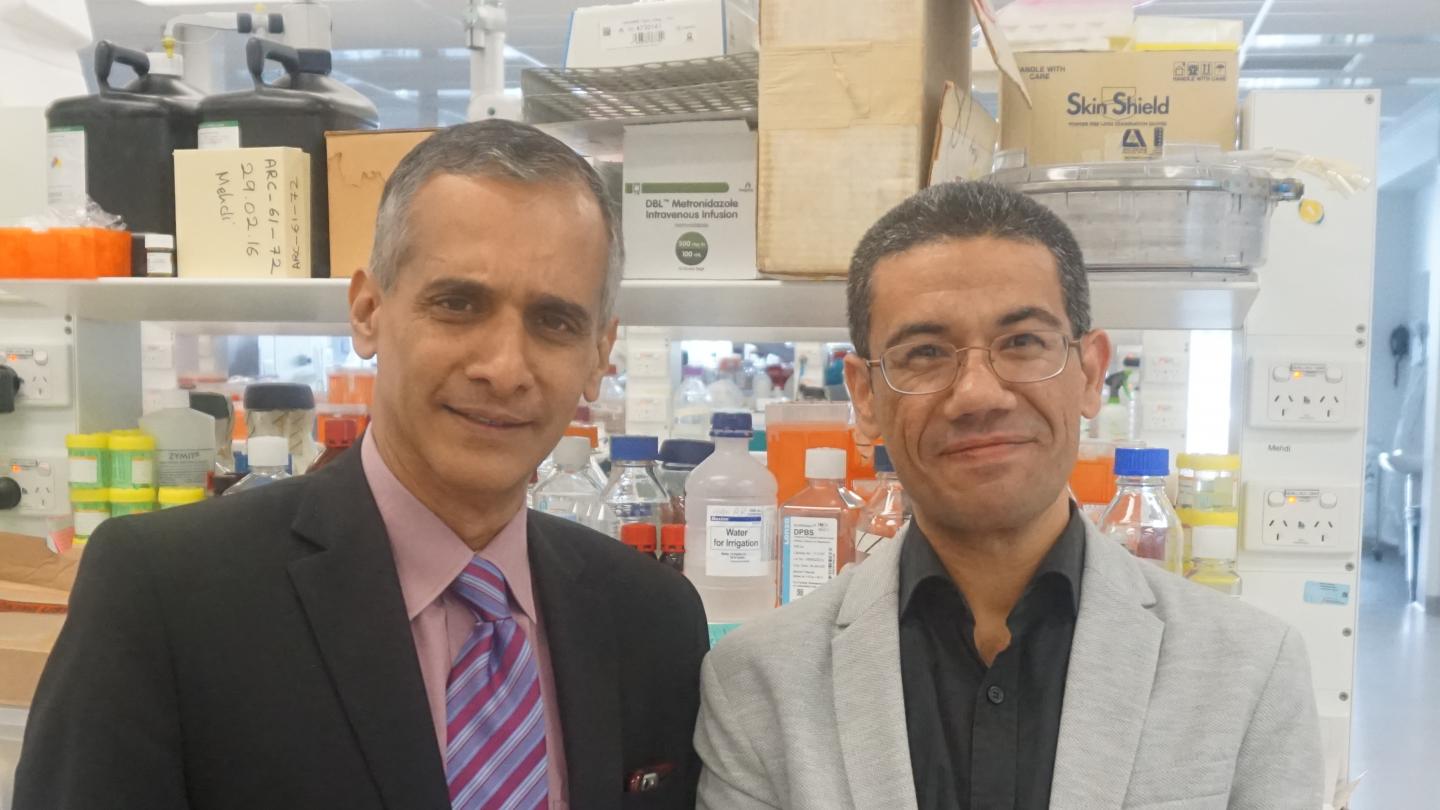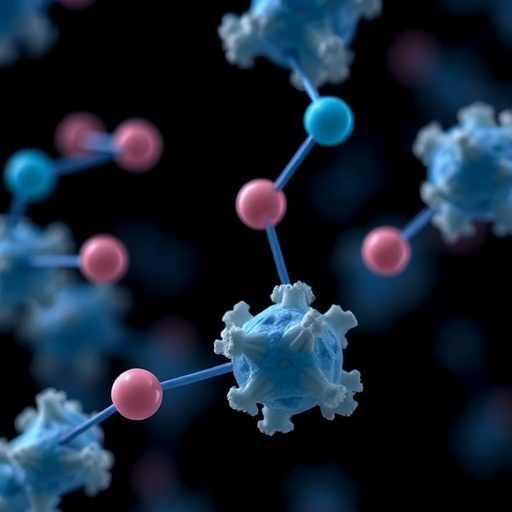
Credit: Westmead Institute for Medical Research
A new test may soon be available to predict advanced fibrosis in people with non-alcoholic fatty liver disease (NAFLD).
NAFLD is the leading cause of chronic liver disease, affecting approximately one in four people, including children, worldwide.
An international research team developed a score, based on the PRO-C3 biological marker, to accurately predict the presence (or absence) of advanced fibrosis in people with NAFLD.
The team, led by Professor Jacob George and Associate Professor Mohammed Eslam from the Westmead Institute for Medical Research, the Westmead Hospital and the University of Sydney, found that PRO-C3 progressively increases as fibrosis becomes more severe.
Professor George and his team combined this data with routine clinical information – such as age, presence of diabetes, and platelet count – to develop a highly accurate tool to detect advanced fibrosis in NAFLD.
The results exceed existing fibrosis scores, accurately identifying 92 per cent of patients with advanced fibrosis.
Lead researcher, Professor George, said the tool would help to identify patients at greatest risk poor long-term health outcomes.
"Given the high global prevalence of non?alcoholic fatty liver disease, we need a non?invasive clinical tool to accurately measure fibrosis," Professor George said.
Associate Professor Eslam added, "Our tool will help identify advanced fibrosis in patients, which is crucial, as these are the people who are most likely to develop future health complications.
"If NAFLD and fibrosis are detected and treated early, permanent liver damage and other life-threatening diseases can be avoided," he said.
NAFLD – also known as "fatty liver" – occurs when more than five per cent of the liver is made up of fatty tissue. As the name suggests, it affects people who drink little to no alcohol.
Professor George said that physical inactivity and obesity were some of the leading causes behind the global rise in NAFLD.
Non-alcoholic fatty liver disease also increases the risk of developing type 2 diabetes and cardiovascular diseases.
NAFLD starts with the build-up of fat in the liver and can lead to scarring in the liver. The scarred organ eventually shrinks and the risks of liver failure and cancer increase.
The study investigated 431 patients from across Australia, the United Kingdom and Japan.
Professor George and his team now hope to validate the score in the general community prior to widespread application and clinical availability.
###
The research paper has been published in the Hepatology journal: https://aasldpubs.onlinelibrary.wiley.com/doi/abs/10.1002/hep.30163
Professor's Jacob George and Mohammed Eslam and Professor Leon Adams from the University of Western Australia led this research.
The research was completed in collaboration with colleagues from:
- Nordic Bioscience Biomarkers and Research, Denmark;
- Department of Gastroenterology and Hepatology, Odense University Hospital, Denmark;
- Storr Liver Centre, The Westmead Institute for Medical Research, University of Sydney and Westmead Hospital, Australia;
- Department of Systems and Biomedical Engineering, Minia University, Egypt;
- Institute of Clinical Research, University of Southern Denmark, Denmark;
- Nottingham Digestive Diseases Centre, The University of Nottingham, UK;
- NIHR Nottingham Biomedical Research Centre at the Nottingham University Hospitals NHS Trust and the University of Nottingham, UK;
- Department of Medicine, Kurume University School of Medicine, Japan;
- Department of Anatomical Pathology, Institute of Clinical Pathology and Medical Research (ICPMR), Westmead Hospital, Australia;
- Department of Diagnostic Pathology, Kurume University Hospital, Japan;
- Department of Anatomical Pathology, PathWest, Fiona Stanley Hospital, Australia;
- Medical School, The University of Western Australia, Australia.
Media Contact
Leesa Maroske
[email protected]
61-439-784-216
@TheWestmead
http://www.westmeadinstitute.org.au/
Original Source
https://www.westmeadinstitute.org.au/news-and-events/2018/new-tool-to-detect-fatty-liver-disease-before-live http://dx.doi.org/10.1002/hep.30163





